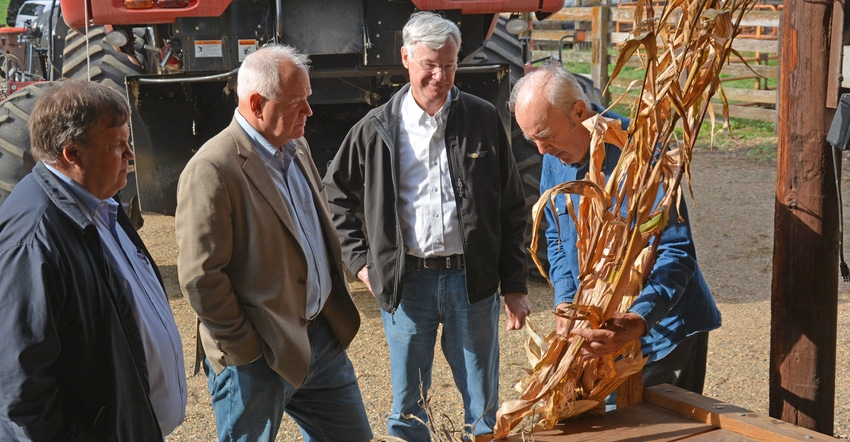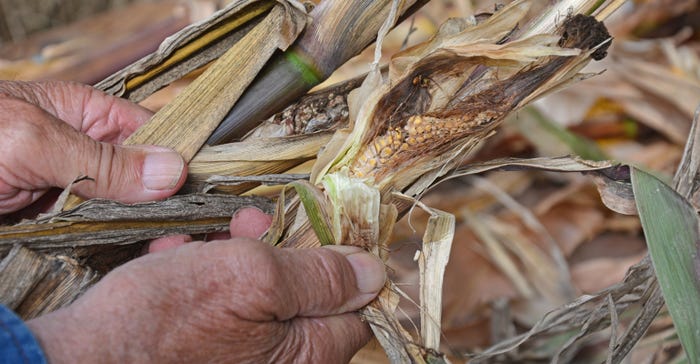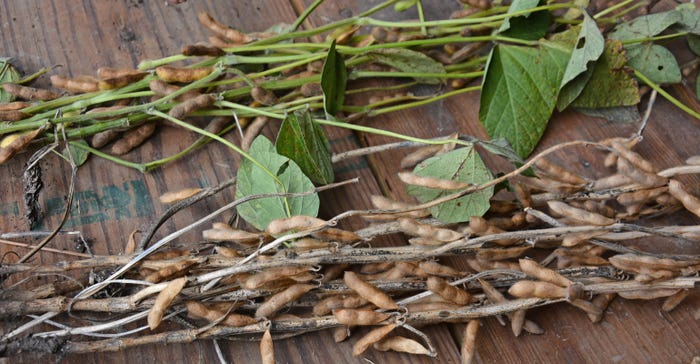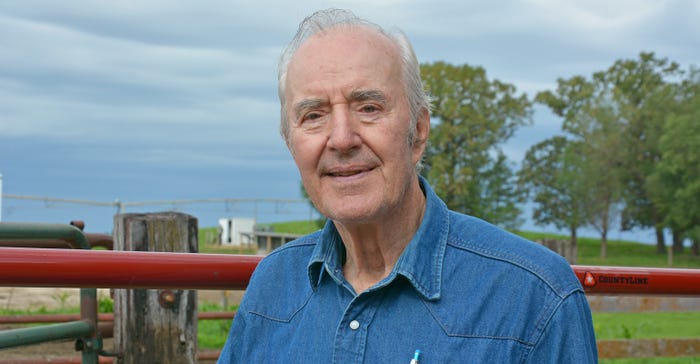
After hearing how the drought has impacted Gene Smallidge’s corn and soybean crop this growing season, Gov. Tim Walz told reporters at a press briefing Sept. 24 that his administration is proposing a $10 million drought relief package.
The proposal, which requires legislative approval, would prioritize funds for specialty crop farmers and livestock producers.
 LACK OF RAIN: This undeveloped corn ear came from a corner of Smallidge’s irrigated cornfield. He is optimistic he will get 220 to 240 bushels per acre on his irrigated acres. However, on his dryland corn, he expects yields to range from 0 to 50 bushels per acre.
LACK OF RAIN: This undeveloped corn ear came from a corner of Smallidge’s irrigated cornfield. He is optimistic he will get 220 to 240 bushels per acre on his irrigated acres. However, on his dryland corn, he expects yields to range from 0 to 50 bushels per acre.

Attending the event on Smallidge’s farm near Hastings were Thom Petersen, Minnesota agricultural commissioner; Gary Wertish, Minnesota Farmers Union president; Dan Glessing, Minnesota Farm Bureau vice president; Kathy Zeman, Minnesota Farmers’ Market Association executive director; and Janssen Hang, Hmong American Farmers Association executive director.
As several speakers noted, time is of the essence in getting the relief package passed.
“This needs to happen now,” Wertish said. “Farmers are making decisions now whether to get out or [keep farming].” Glessing added that farmers are making decisions now on seed purchases and other inputs for the 2022 season.
 MOISTURE IMPACT: The soybean plants shown are of the same variety, and both were planted on the same day. Gene Smallidge said the greener beans (top) are on nonirrigated land and about a week to a week and a half behind the beans showing drydown (bottom). Those beans are on irrigated land. Smallidge estimated he’ll see 55 to 60 bushels per acre in yield.
MOISTURE IMPACT: The soybean plants shown are of the same variety, and both were planted on the same day. Gene Smallidge said the greener beans (top) are on nonirrigated land and about a week to a week and a half behind the beans showing drydown (bottom). Those beans are on irrigated land. Smallidge estimated he’ll see 55 to 60 bushels per acre in yield.

The proposal includes $5 million in rapid response grants to provide drought relief for livestock producers and specialty crop producers. Examples of eligible costs include water handling equipment such as water tanks, pipeline and water wagons, water hauling, wells and irrigation equipment. Grants of up to $5,000 per grower would be available. The first $1 million would be specifically for livestock and specialty crop farmers.
The funding proposal also includes $5 million for the Rural Finance Authority’s Disaster Recovery Loan Program. The RFA’s disaster recovery program makes zero-interest loans available immediately for Minnesota farmers whose operations are suffering from lack of rain. Loans can be used to help cover lost revenue or expenses not covered by insurance.
The proposal disaster relief package would fill some financial gaps not covered by federal programs, such as crop insurance, Walz said. Those programs provide some relief to row crop farmers, but not livestock and specialty crop producers.
“This proposal is a starting point,” Petersen said. “We feel we have the resources, and we want to show we care.” Some lawmakers also have ideas on how to help farmers impacted by drought, he added. However, nothing formal had yet been proposed.
Petersen also shared that Minnesota has lost another 40 dairy farms this summer, drawing down overall dairy farm numbers to under 2,000 farms — a first in the state.
 CROPS AND LIVESTOCK: Gene Smallidge and his wife, Louise (not shown), in addition to raising crops, have a 75-head Black Angus herd. They market their beef at 18 months of age via direct sales to consumers. The family owns and operates two farms near Hastings. The original farm has been in the family since 1916. Back then, Smallidge’s grandfather built the largest stanchion barn in the county to hold 36 cows and draft horses. Livestock graze pasture in the Mississippi River bottoms.
CROPS AND LIVESTOCK: Gene Smallidge and his wife, Louise (not shown), in addition to raising crops, have a 75-head Black Angus herd. They market their beef at 18 months of age via direct sales to consumers. The family owns and operates two farms near Hastings. The original farm has been in the family since 1916. Back then, Smallidge’s grandfather built the largest stanchion barn in the county to hold 36 cows and draft horses. Livestock graze pasture in the Mississippi River bottoms.

The proposed drought relief marks a historic advancement for specialty crop farmers.
Drought relief package firsts
“This is the first time ever that a policy is focused on the farm and not on the production unit, such as per acre or per hundredweight,” Zeman said. “It’s the first time that money is going to the farmer on the land.”
Hang acknowledged the inclusion of the Hmong agricultural community as groundbreaking.
“This is the biggest game-changer,” he said. “This administration and commissioner of agriculture see us and know we exist. By being included, we’re elevated and valued.”
More details on the drought relief package will be announced when available.
About the Author(s)
You May Also Like






